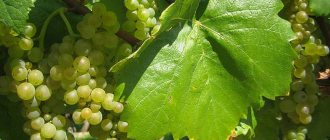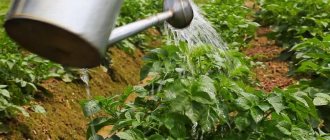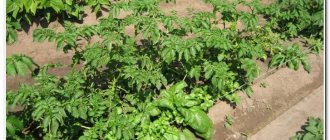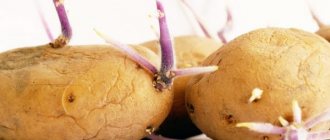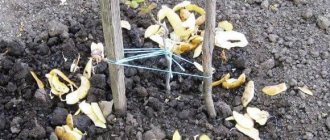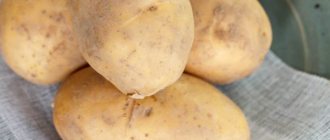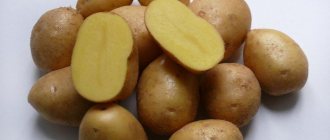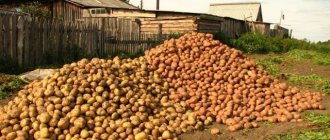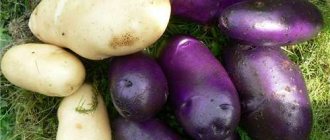After harvesting, the soil loses a large amount of nutrients. To restore its fertility, experienced vegetable growers fertilize the areas allocated for potatoes not only immediately before planting, but also in the fall. By spring, organic matter has time to rot together with the remains of weeds, and mineral fertilizers are partially decomposed, forming easily digestible compounds. This is especially convenient if the gardener plans to plant young potatoes early.
However, it must be taken into account that autumn fertilization of the site is best done on heavy, clayey soils: nutrients are easily washed out from sandy loam soils, so most of the labor and money is wasted. It is better to sow light soil with green manure in the fall or simply add ash: it disinfects, alkalizes and enriches it with potassium. Such soils are fertilized mainly in the spring.
Choosing a place to plant potatoes in the fall
There is a fairly common misconception that potatoes can be planted anywhere and they will grow well. However, there are a number of rules, following which you can get a good harvest. Potatoes are a light-loving crop; only a well-lit area is suitable for it. Without sufficient lighting, the above-ground part will stretch out and turn yellow, so you can’t count on a large harvest. After all, tubers consume what the tops accumulate. As a perennial plant, potatoes, having accumulated the required amount of nutrients in the tubers, will sprout again.
Latest articles about gardening
Salting cabbage in February 2021 according to the lunar calendar
How to treat pepper seeds with hydrogen peroxide before planting seedlings?
Treating pepper seeds with potassium permanganate before planting seedlings
An aspect that is important to pay attention to is the weak root system of potatoes:
- Therefore, for normal development, the crop requires loose, oxygen-enriched soils that will not interfere with the growth of roots and stolons.
- To get a good harvest, potatoes need to be planted on loamy, fertile, light super-sandy loose soils. Heavy clay soils are not suitable for growing this crop; compost, sand and manure must be added to such soil.
- It is important that there is no stagnation of water.
- Lime or wood ash is added to acidic soils at the rate of 15 kg per 100 sq.m.
Try to protect the area for growing potatoes from the north and northeast with trees or shrubs. It is desirable that the site has a slope towards the south or south-west. Every two years it is advisable to change the planting location, giving the soil a rest.
It is not recommended to plant potatoes in areas where tomatoes, strawberries, peppers or eggplant grew. It is preferable that the predecessors of potatoes are cabbage, pumpkin, legumes, cucumbers, carrots and beets.
Careful use
Chicken contains a high content of nitrogen compounds. Undoubtedly, they are important during the growth and formation of the bush, but if their content is greatly increased during the formation of tubers, then it is impossible to obtain a high yield. Exceeding the optimal concentration leads to the fact that all the energy goes into the tops. If the nitrogen content is too high, the tops will be as tall as a person.
How to improve productivity?
We are constantly receiving letters in which amateur gardeners are worried that due to the cold summer this year there will be a poor harvest of potatoes, tomatoes, cucumbers, and other vegetables. Last year we published TIPS on this matter. But unfortunately, many did not listen, but some still applied. Here is a report from our reader, we would like to recommend biostimulants for plant growth that will help increase the yield by up to 50-70%.
We advise you to prepare in advance for the summer season, pay attention to this biological product. There are a lot of positive responses.
Excessive amounts of fertilizers lead to the accumulation of nitrates in tubers, which not only harm health, but also spoil the taste of the fruit and complicate its preparation and storage.
What fertilizers are needed for potatoes?
So what substances in the soil determine the potato yield? Nitrogen and potassium affect the mass of tubers, and phosphoric acid is responsible for their quantity. That is, if there is a lack of the first substances, the potatoes will be medium-sized, and if there is a lack of phosphorus, the number of tubers will decrease, but the weight will remain the same. That is why, when growing seed potatoes, the dose of nitrogen fertilizers is reduced and the dose of phosphorus fertilizers is increased.
In addition to root nutrition, carbon nutrition through the leaves of the plant (absorption of carbon dioxide from the air) is also important. The increase in carbon dioxide in the ground layer of air is provided by microorganisms that decompose soil organic matter. Therefore, the richer the soil is in humus, the more microorganisms there are in it and, accordingly, the greater amount of carbon dioxide is released and the more effective the carbon nutrition of the plant.
And a little about the author’s secrets
Have you ever experienced unbearable joint pain? And you know firsthand what it is:
- inability to move easily and comfortably;
- discomfort when going up and down stairs;
- unpleasant crunching, clicking not of your own accord;
- pain during or after exercise;
- inflammation in the joints and swelling;
- causeless and sometimes unbearable aching pain in the joints.
Now answer the question: are you satisfied with this? Can such pain be tolerated? How much money have you already wasted on ineffective treatment? That's right - it's time to end this! Do you agree? That is why we decided to publish an exclusive interview with Oleg Gazmanov, in which he revealed the secrets of getting rid of joint pain, arthritis and arthrosis.
Digging the garden in the fall for potatoes
Digging and plowing the field for future harvesting is just as important. Therefore, you shouldn’t be lazy, but it’s better to put the earth in order before the frosts. So it will be more loose, there is a possibility that frosts will cause more damage to the roots of the weeds, which will be on top or there will be an influx of frosty air to them.
Heavy soils should be plowed twice; for light soils, a single plowing or digging is enough. Go deeper. This will loosen and change the layers of the earth, which is also worth doing from time to time.
You also need to work on acidic soil in the fall. Moss, sorrel, and horsetail, which will sprout on their own in your beds, will tell you about acid. To restore normal acidity, dolomite, lime or ash are suitable. 200 g per square meter is a completely sufficient dose.
Autumn feeding of potatoes
You can fertilize the soil for future planting of potatoes both in the fall and in the spring. But the types of fertilizers applied in the fall differ from those in the spring. To apply organic fertilizers for potatoes in the fall, it is recommended to use rotted manure or compost.
Such advance introduction of organic matter has two advantages. Firstly, precious spring time is saved, when there is a lot to do. Secondly, over the winter the organic matter will rot even more, which will contribute to better absorption of nutrients by young tubers. Agronomists recommend adding organic matter in an amount of 5 - 10 kg per 1 sq.m. Manure is applied before plowing, spreading it evenly over the area. In autumn, you can add potassium sulfate and double superphosphate:
- Recommended rate for applying potassium sulfate to potatoes: 2 kg per hundred square meters (plot 10 m x 10 m).
- Recommended application rate of double superphosphate for potatoes: 1 kg per hundred square meters (plot 10 m x 10 m).
Application
Chicken droppings should be collected regularly. Within a day, bird excrement dries out, losing 1/3 of its moisture, nitrogen and a number of organic substances. To ensure that chicken manure retains its beneficial qualities for a long time, it is placed in compost. Place 5 cm of peat (or 20 cm of plant residues) and 10 cm of garden soil on the next layer of chicken manure. After this, you can add more bird excrement to the compost. When the peat manure compost has finally matured, it is applied to potato plantings at the rate of 0.6 kg of fertilizer per 1 m2.
Unlike pure chicken manure, this compost does not cause the tubers to accumulate large amounts of nitrates. In addition, it significantly increases the resistance of the crop to a number of dangerous diseases of various natures.
Not every summer resident can afford to have compost with chicken droppings. In this case, you should simply dilute fresh chicken excrement in water in a ratio of 1 to 15, infuse the resulting solution for 2-3 days in a warm room and water it at the root at the rate of 1 liter of product for each bush.
Another important distinguishing property of chicken manure is its prolonged action. One application is enough for the entire season. Therefore, you should not overdo it by re-applying bird droppings. This can even harm the plants. Potatoes will grow tops the size of a sunflower, but the tubers, on the contrary, will be underdeveloped.
For the same reason, these root crops are fed with chicken manure before flowering, since later the plants begin to spend significant resources on the formation of tubers. During this period, they no longer need nitrogen, but potassium and phosphorus.
Additionally, it is advisable to add potassium chloride in a ratio of 1 to 10 (potassium to droppings) to fertilizing based on bird excrement.
Application of phosphorus fertilizers in autumn for potatoes
Phosphorus fertilizers for potatoes can be applied both in the fall during autumn plowing and in the spring during cultivation or before cutting ridges.
Sowing calendars for 2021
Lunar calendar for December 2021 for gardener and vegetable gardener
Lunar sowing calendar for September 2021 for gardeners and gardeners
Lunar sowing calendar for October 2021 for gardeners and gardeners
Lunar sowing calendar for November 2021 for gardeners and gardeners
A mandatory technique (if appropriate equipment is available) should be the application of 20 kg of phosphorus or complex fertilizer at a dose of N10-20P10-20K10-20 (1-2 c/ha of nitrophoska) into the rows when planting potatoes.
Sowing green manure before winter under potatoes in the fall
Another method of increasing soil fertility in a potato plot is to sow green manure before winter, such as winter vetch. This type of green fertilizer accumulates both nitrogen and essential microelements in young shoots. You can sow white mustard or oats. The crops sprout in a sort of even mat. And when the time comes for the first hilling of potatoes, they cut off the upper part of this “mat” with a hoe, leaving the roots underground. The roots, when overheated, provide food to the potato roots and looseness to the soil. The general meaning is this. You can, of course, try to sow green manure in a small area, and what if the potatoes really turn out larger and tastier, as the pioneers of this method say. But until you check it yourself, you won’t believe it - we’ll try.
Making an infusion from chicken
Fertilizer with diluted infusion
This type of fertilizing is very common among experienced gardeners due to its effectiveness. The infusion quickly activates the growth of potatoes, and if you water the bushes with it, the result is noticed in two weeks. Rotted manure is poured with water, kneaded and left for a couple of days. For watering you need a weak solution of light brown color. If it looks more concentrated, it is better to dilute it with water so as not to damage the root system.
Adding compost to potatoes in the fall
The second most popular organic fertilizer is compost. This is a substance made from well-rotted plant remains. To prepare it, large compost heaps are arranged (in special composting boxes or pits), into which vegetation and any plant and food waste are placed. Tops from a wide variety of crops, damaged or unripe fruits, and weeds are used. It is advisable to sprinkle the layers with wood ash. Compost heaps are covered with a layer of earth and film on top.
After some time, the material in the compost piles will begin to decompose and turn into fertilizer. This process is accelerated by a sufficient amount of moisture (heaps need to be watered from time to time), high temperature, as well as beneficial earthworms, which breed very quickly in such heaps. In the spring, before digging, compost is scattered around the site.
Happy potato harvest to you! It’s better to work hard in the fall so that you can enjoy delicious dishes from your favorite potatoes all year round.
